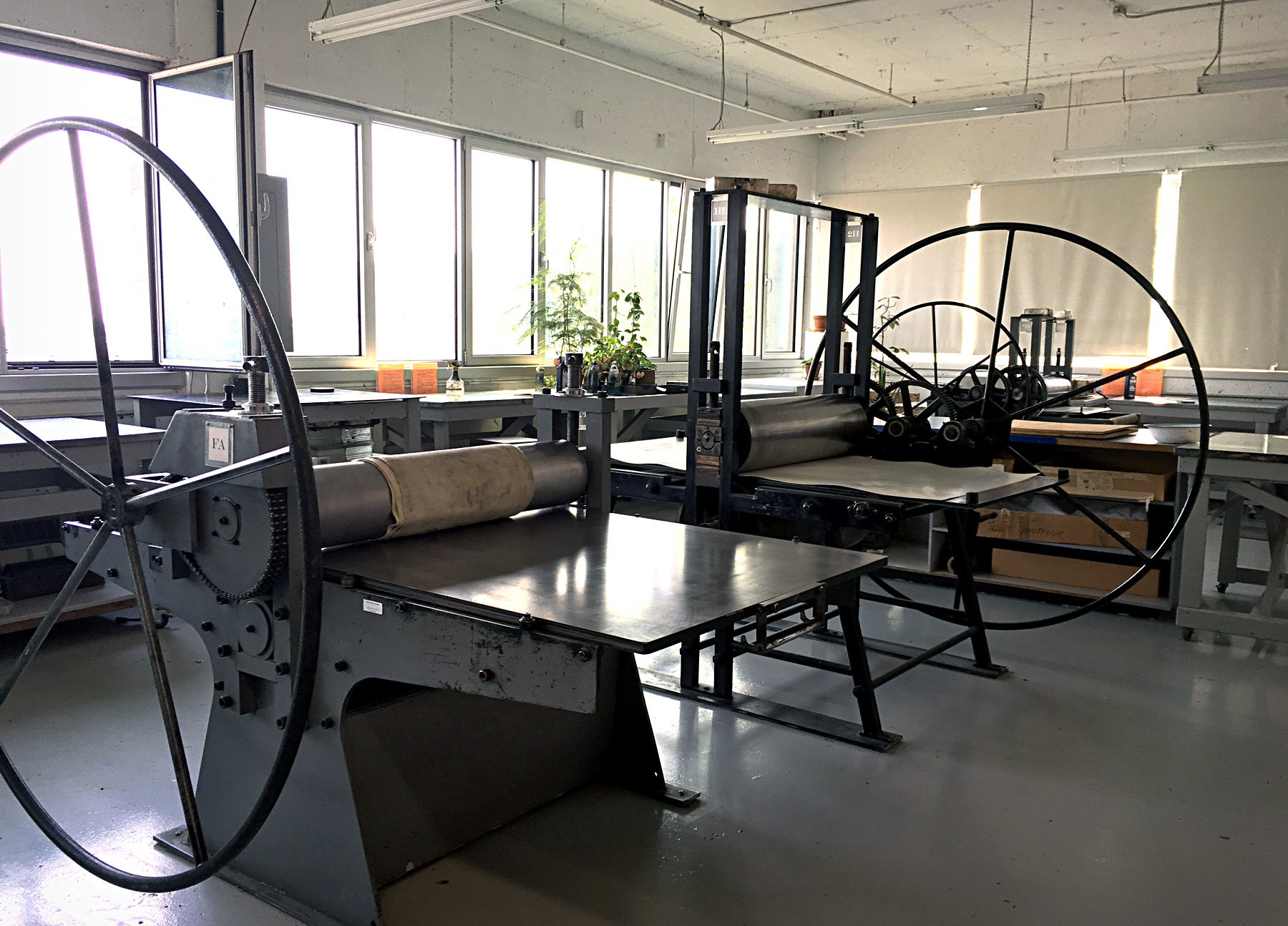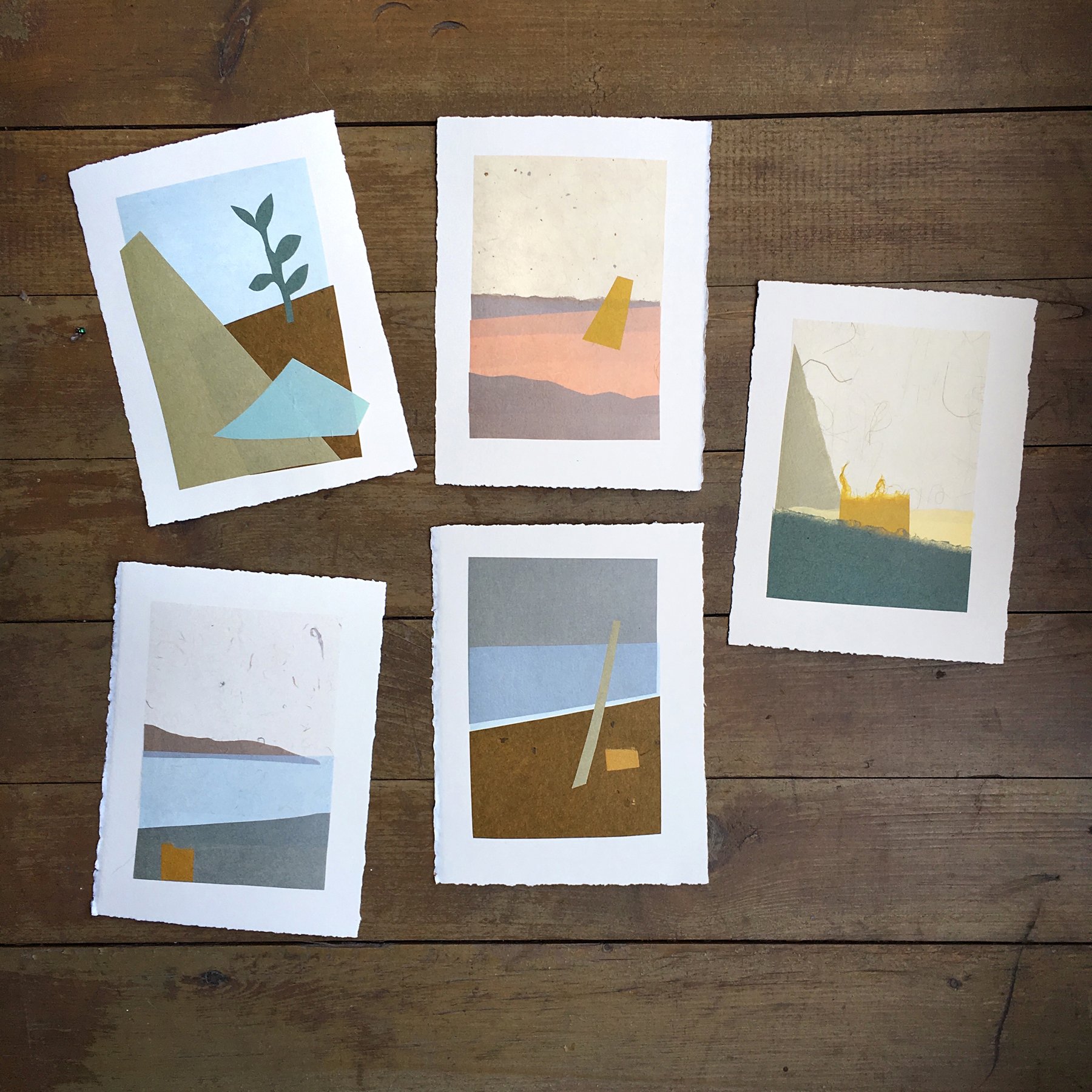Playing with Paper: Exploring Chine-Collé
Paper collage made with a printing press and Japanese papers
It can be easy to forget to share the behind-the-scenes of what we are working on. These things can give a glimpse into the artistic process and into other ways of working that can be very enlightening and inspiring to others. So, I thought I’d share with you here a few recent explorations I made in chine-collé as well as pictures of the shared studio space in which I often work
Chine-collé is a type of paper collage that is often combined with other forms of printmaking. Typically, it uses Japanese and other handmade lightweight papers which you coat with a thin rice paste glue.While waiting for the glue to dry, the paper that you wish to affixing the collage onto is soaked in a water bath. After a half hour, or so, you can remove the wet paper and blot it dry. The collage pieces are then arranged on the damp paper and run through a heavy printing press that is turned by hand.The dampness of the base paper reactivates the glue on the collage pieces which are pressed together as they are moved through the press. The resulting collage is not like one made by hand. Because of the pressure of the press roller, the papers have almost merged into one flat plane. (If you don’t have access to a press, you can get a similar result using an inexpensive printing baren for hand-pressing).
The press area at Atelier Circulaire in Montréal
I work best when I can see what something will look like, so when making these collages, I first sat for a couple of hours and arranged several ideas. Only once I was happy with how they looked, did I move to spending the afternoon assembling them into their finished collages. I found the whole process very meditative.
Tearing, cutting, and laying out the paper pieces to compose what will become the finished collage
I have been discovering the beauty of Japanese papers: their translucency, and the fibre and plant textures of what made them. Many of them are amazingly resilient and can be painted or dyed with natural dyes for a custom range of colours.
I am a little mesmerized by their beautiful textures – especially the rough organic quality of the edges. I find myself drawn to texture almost everywhere, lately. I just keep noticing it everywhere I go! It occurs to me that the textures of paper are likely a lead-in to those of textiles (more on this, soon).
Below is a gallery of initial explorations and imagined seascapes – as well as more pictures of the studio space and presses.
I’d love to hear what you think over on Instagram or you can always email me directly! If you’re exploring anything new, I’d love to hear about that, too.
For fellow-makers I wrote a piece all about showing up and doing the work. If you’re struggling to feel excited in your creative work, I also have a post full of free ways to feel inspired.
JOIN THE STUDIO LIST for tools to help you live your most engaged creative life, view new art as it created, and learn the stories behind the paintings. Be the first to see and get access to new art. PLUS Get a FREE guide about Overcoming Your Inner Critics delivered to your inbox right away! YES PLEASE, COUNT ME IN!
















